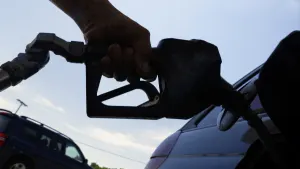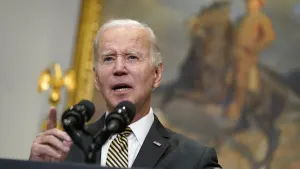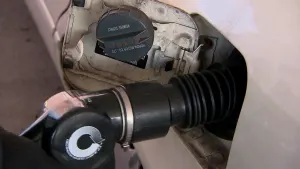More Stories

Gasoline prices have smashed a 2008 record and are likely to head even higher, further fueling inflation and hitting consumers and businesses that are still coming to grips with the pandemic.
The national average topped $4.17 a gallon on Tuesday, according to auto club AAA, and several states on each coast could soon join California in the $5-and-up club.
Prices at the pump have been rising for more than a year, and analysts expect further increases after President Joe Biden announced that the United States will ban imports of Russian oil to punish Russia more severely for invading Ukraine.
As painful as this week’s prices are, they are still not the highest that Americans have paid when you consider inflation. In today’s dollars, that 2008 record of $4.10 a gallon would be equal to about $5.24.
A look at how we got here, and what it means for American households:
WHEN DID PRICES START RISING?
After averaging $2.69 a gallon in 2019, U.S. gasoline prices collapsed as COVID-19 forced offices and businesses to close in early 2020. By late April 2020, a gallon sold for under $1.90. Prices have mostly risen since then, as demand for energy rebounded, global production failed to keep pace, and inventories shrank.
WHY ARE PRICES SO HIGH?
It boils down to supply and demand. The world consumes nearly 100 million barrels of oil a day on average. Producers cut spending on exploration and production during the pandemic, and they have been slow to ramp back up. Some producers say they face labor and parts shortages.
The benchmark price for U.S. oil was around $125 a barrel in afternoon trading Tuesday, while the international standard, Brent crude, was above $130. Of course, consumers didn't mind when crude was below $20 at the start of the pandemic.
“Oil companies don't set the market prices; people do, by filling up their tanks,” says Patrick De Haan, petroleum analyst for GasBuddy, which tracks gasoline prices around the U.S.
HOW MUCH IS DUE TO RUSSIA'S WAR?
Analysts say that nearly the entire rise of the last week - about 55 cents a gallon nationwide, on average - can be linked to anticipation that eventually western countries would ban Russian crude, further shrinking their already tight supplies.
“The U.S. doesn’t need Russian oil per se, but the world and particularly Europe are dependent on it,” says Tom Kloza, an analyst for the Oil Price Information Service.
According to government figures, the U.S. imported 245 million barrels of oil from Russia last year, or 8% of all U.S. oil imports. That is less than the United States imported from Canada or Mexico but more than it took from Saudi Arabia.
WHEN WILL PRICES EASE?
Normally fuel prices rise in spring and summer, as Americans drive and fly more. Demand could also get a boost as countries continue to shed their COVID-19 restrictions. Those trends suggest that pump prices are heading higher, with demand continuing to outstrip supply.
“It's not going to be a good summer for motorists,” De Haan says.
More from News 12
1:45

17 tricks to help you save at the pump
0:23

Oil prices creep higher, raise inflation concerns
1:21

Pump Patrol: Finding the best Bronx, Brooklyn gas prices before winter recess travel
1:39

Pump Patrol: Increased gas prices expected following holiday break
1:39

Facing tough midterms, Biden releasing oil from US reserve
1:32
